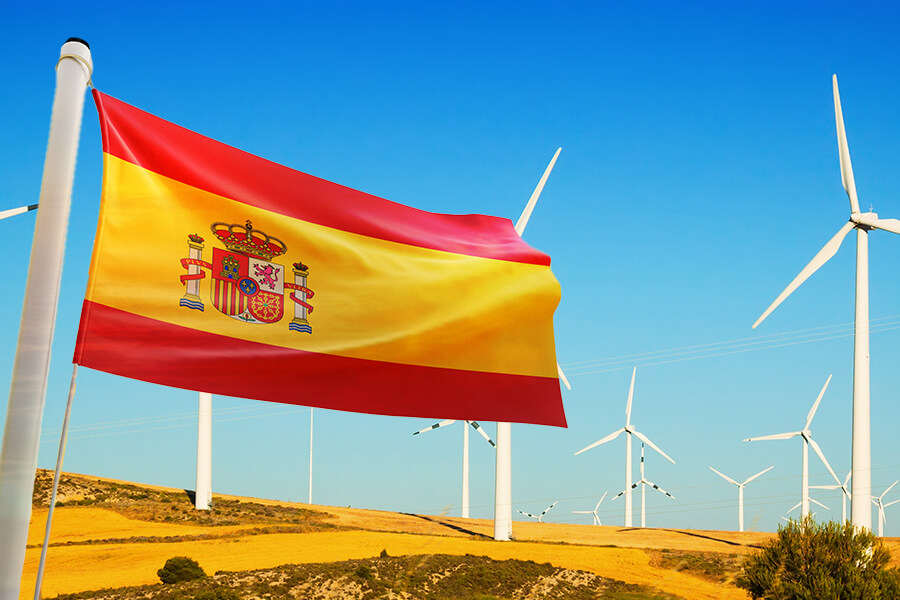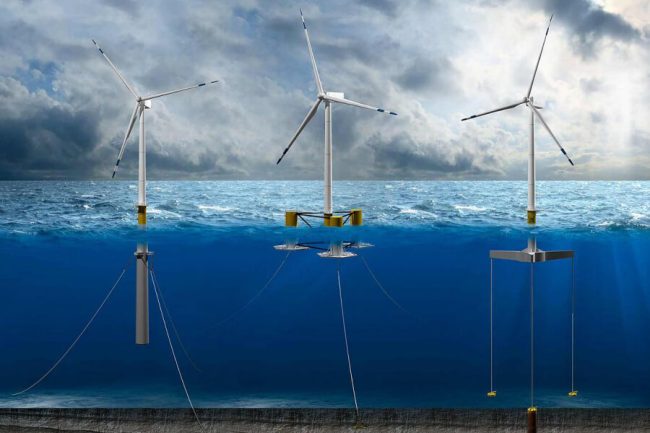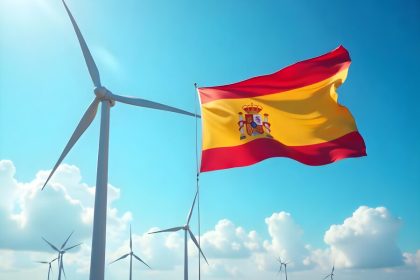Wind energy has become a cornerstone of Spain’s commitment to renewable energy, shaping the country’s path toward a cleaner and more sustainable future. With vast wind resources and strong governmental support.
Spain ranks among the world’s leading producers of wind energy. But how does it work, and what does the future hold for this ever-evolving industry?
Wind Energy Revolution in Spain
Spain has undergone an incredible transformation, emerging as one of the top five global leaders in wind power.
Thanks to its diverse landscape ranging from long coastlines to mountainous regions and wide open plains. Spain has the perfect conditions for capturing it. What started as a niche energy source has now become a major player in the country’s energy mix.
Today, wind energy accounts for over 23% of Spain’s total electricity. It’s not just numbers; this clean energy powers millions of homes and businesses across the country. Spain’s dedication to wind power is a key part of its mission to cut down on fossil fuel use and reach carbon neutrality by 2050.
Overview of Wind Energy Sector in Spain
Wind power in Spain primarily consists of onshore wind farms, which make up the bulk of the country’s installed capacity.
As of 2023, Spain boasts over 28,000 megawatts (MW) of installed wind power capacity, making it the second-largest wind producer in Europe after Germany.
Onshore wind farms are prevalent in areas such as Galicia, Castile, and León, where consistent wind patterns provide the necessary force to drive large wind turbines. However, Spain is also exploring the possibilities of offshore wind farms, which can capture the more powerful and stable winds over the ocean, offering even greater energy potential.
History of Wind Energy in Spain
Spain’s journey with wind power began in the 1990s when the country first started investing in renewable energy to diversify its energy sources.
The first modern wind farms were constructed in Spain during this period, laying the groundwork for what would become a booming industry.
The early 2000s saw rapid growth as Spain implemented policies that incentivized the development of renewable energy infrastructure, leading to a dramatic increase in installed wind capacity.
By 2010, Spain had become a global leader in wind power, setting a strong example for other nations to follow.
Current State of Wind Energy Sector
In 2024, Spain will continue to build upon its achievements. The country has over 1,200 operational wind farms, with more projects underway. These wind farms house thousands of turbines that generate clean electricity, helping Spain reduce its carbon footprint and dependence on fossil fuels.
The transition to wind power has been supported by favorable policies, including subsidies, feed-in tariffs, and other incentives aimed at promoting renewable energy development. This has enabled the industry to grow steadily, with Spain consistently meeting and exceeding its renewable energy targets.
Key Players in the Spanish Wind Energy Sector
Several key players contribute to the success of Spain’s wind power sector. The industry is composed of a mix of large multinational companies and domestic firms that are deeply involved in the development, construction, and operation of wind farms.
Leading Wind Energy Companies in Spain
- Iberdrola: Iberdrola is one of the world’s largest wind power producers and a leader in Spain’s renewable energy market. The company operates numerous onshore and offshore wind farms and continues to invest in expanding its wind capacity.
- Siemens Gamesa Renewable Energy: Siemens Gamesa, headquartered in Spain, is a global leader in wind turbine manufacturing and service. It supplies turbines to many wind farms in Spain and around the world, making it a vital part of the industry’s infrastructure.
- Acciona Energía: Acciona Energía is a major player in Spain’s renewable energy sector, operating significant wind power assets. The company has made substantial investments in both onshore and offshore wind farms, with plans for future expansion.
Government Involvement and Regulations
The Spanish government has been a crucial driving force behind the growth of wind power. Policies promoting renewable energy development have provided financial support and created a stable regulatory environment for investors. The government’s ambitious National Energy and Climate Plan (PNIEC) sets clear targets for expanding wind capacity, aiming for 50 GW of wind power by 2030.
Spain has also committed to phasing out coal plants by 2030, further incentivizing renewable energy development, including wind power.
Technological Advancements in Spanish Wind Farms
Copyright: e360.yale.edu
Wind power technology has come a long way in Spain. Modern turbines are significantly more efficient, and capable of generating more power while occupying less space.
Innovations such as: Floating wind turbines are expected to play a key role in expanding offshore wind farms, particularly in deep-water areas off the coasts of Spain.
Other technological advancements include improvements in grid integration, which allow wind power to be more easily distributed across the national energy grid, ensuring that it complements other renewable sources like solar power.
Onshore Wind Farms in Spain
Spain’s onshore wind farms are widely regarded as some of the most efficient in Europe. These farms are strategically located in areas with consistent wind patterns and feature advanced turbines capable of generating large amounts of electricity with minimal environmental impact.
Regions such as Galicia, Andalusia, and Castile-La Mancha have become hubs for wind power development, providing a significant portion of the country’s electricity.
Offshore Wind Farms Development
While onshore wind dominates the current landscape, Spain is increasingly turning its attention to offshore wind farms. The country’s extensive coastline offers vast potential for capturing stronger and more reliable wind power.
Although offshore wind development is still in its early stages in Spain, the government has announced plans to build large-scale offshore projects in the coming years.
Spain’s focus on floating wind farms allows for installations in deeper waters where fixed-bottom turbines aren’t feasible, unlocking new areas for wind power generation.
Environmental and Economic Impact of Wind Energy
Wind energy’s environmental and economic impacts are substantial. The reduction of carbon emissions is one of the most significant benefits, as wind power generates electricity without emitting greenhouse gases.
Spain’s heavy investment in wind energy has helped the country move closer to its climate goals, including reducing emissions by 55% by 2030.
In addition to environmental benefits, wind energy has created thousands of jobs across Spain.
From manufacturing and installation to maintenance and research, the sector has provided opportunities for economic growth, particularly in rural and coastal areas where wind farms are often located.
Challenges and Future Prospects
Despite its successes, Spain’s wind energy sector still faces challenges. One of the most pressing issues is grid integration.
As more renewable energy sources come online, ensuring a stable supply of electricity to the grid becomes more complex. Investments in smart grids and energy storage technologies are essential to overcoming this challenge.
Innovations and Research Initiatives
Spain is also investing in innovations and research to make wind energy even more efficient. Projects focused on aerodynamics, turbine efficiency, and energy storage are at the forefront of research, helping to further increase the capacity and reliability of wind energy.
Future Outlook for Wind Energy in Spain
Looking ahead, the future of wind energy in Spain is bright. With continued investments, supportive government policies, and advancements in technology, wind power is poised to become an even more critical component of Spain’s energy mix.
By 2050, the country aims to achieve full carbon neutrality, with wind energy playing a major role in reaching this goal.
Conclusion
Wind energy has transformed Spain’s energy landscape, providing a clean, renewable alternative to fossil fuels while driving economic growth and job creation.
The country’s leadership in wind energy, both onshore and offshore, serves as a model for the world as it continues to explore innovative ways to harness the power of the wind.
As Spain moves forward, its commitment to wind energy will undoubtedly play a crucial role in achieving a sustainable and green future.
FAQs
What is the wind potential in Spain?
Spain has vast wind potential, particularly in coastal and mountainous regions. This has enabled the country to become one of the largest producers of wind energy in Europe.
What is the future development of wind energy in Spain?
The future of wind energy in Spain includes significant expansion in both onshore and offshore projects, with a target of reaching 50 GW of wind power by 2030.
What is the future potential for wind resources?
Spain’s future wind potential is immense, with technological advancements and government support expected to further increase the country’s capacity for clean energy production.







